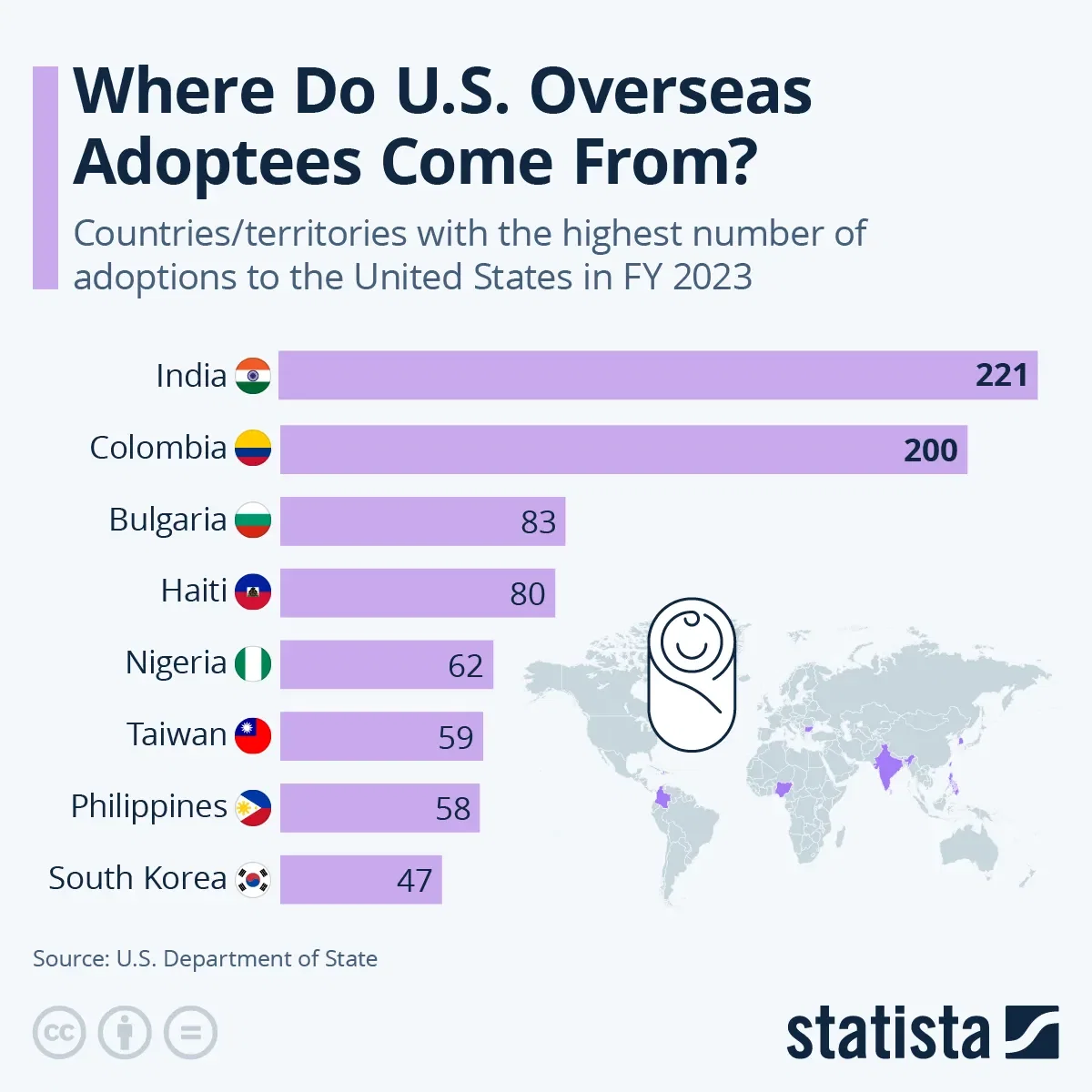Where Data Tells the Story
© Voronoi 2025. All rights reserved.

The U.S. international adoption landscape has changed fundamentally in the past years as fewer and fewer children arrive in the country as adoptees. This is the result of many nations changing their stance on allowing or supporting outgoing overseas adoption. Recently, the practice of uprooting children has been called into question. Additionally, countries have increasingly been wanting to show that they can handle sensitive social issues like adoption locally. The biggest recent change came from China, which in 2018 still sent almost 1,500 children to the U.S. as adoptees.
In the fiscal year of 2023, this had fallen to a low of just 16. South Korea slowed down overseas adoptions even earlier - to several hundred per year in the 2010s - and finally arrived at just 47 in 2023. However, due to high historical adoption activity between the U.S. and both countries, the U.S. Department of State lists almost 83,000 adoptions from China and 21,500 from South Korea since 1999. Because of a cultural taboo around adoption in the latter country, adoptions between the U.S. and South Korea have been going on for a long time and around 200,000 were finalized since 1953, making those born in Korea the biggest group of U.S. overseas adoptees historically. Other historically large groups come from birth countries Russia, Guatemala, Ethiopia and Ukraine.
Today, much fewer overseas adoptees arrive in the U.S., the biggest groups in the fiscal year of 2023 being from India (221), Colombia (200), Bulgaria (83) and Haiti (80). While last year just under 1,300 overseas adoptions to the U.S. were finalized, this number stood at around 6,700 in 2023 and 21,200 in 2003.